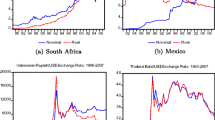Abstract
The interwar period was marked by the end of the classical gold standard regime and new levels of macroeconomic disorder in the world economy. The interwar disorder often is linked to policies inconsistent with the constraint of the openeconomy trilemma-the inability of policymakers simultaneously to pursue a fixed exchange rate, open capital markets, and autonomous monetary policy. The first two objectives were linchpins of the pre-1914 order As increasingly democratic polities faced pressures to engage in domestic macroeconomic management, however, either currency pegs or freedom of capital movements had to yield. This historical analytic narrative is compelling – with significant ramifications for today's world, if true – but empirically controversial. We apply theory and empirics to the interwar data and find strong support for the logic of the trilemma. Thus, an inability to pursue consistent policies in a rapidly changing political and economic environment appears central to an understanding of the interwar crises, and the same constraints still apply today.
Similar content being viewed by others
Rights and permissions
About this article
Cite this article
Obstfeld, M., Shambaugh, J. & Taylor, A. Monetary Sovereignty, Exchange Rates, and Capital Controls: The Trilemma in the Interwar Period. IMF Econ Rev 51 (Suppl 1), 75–108 (2004). https://doi.org/10.2307/30035887
Published:
Issue Date:
DOI: https://doi.org/10.2307/30035887




